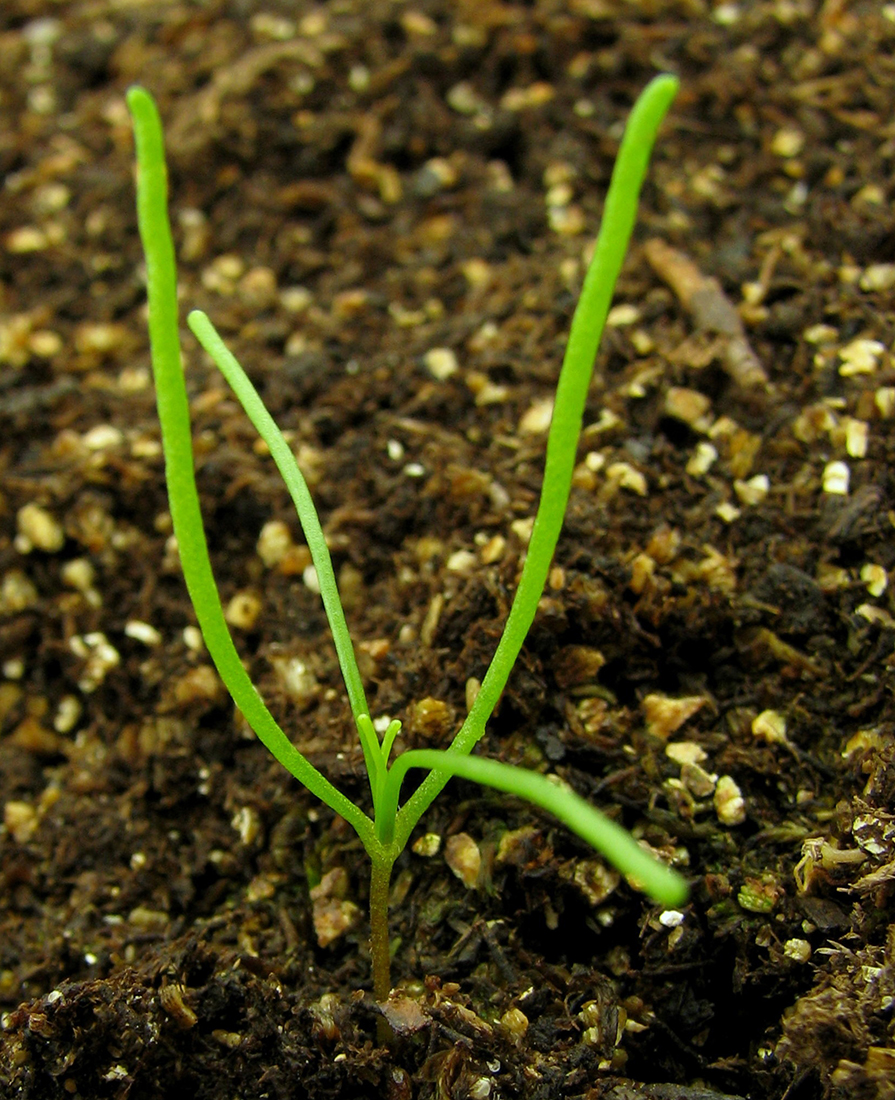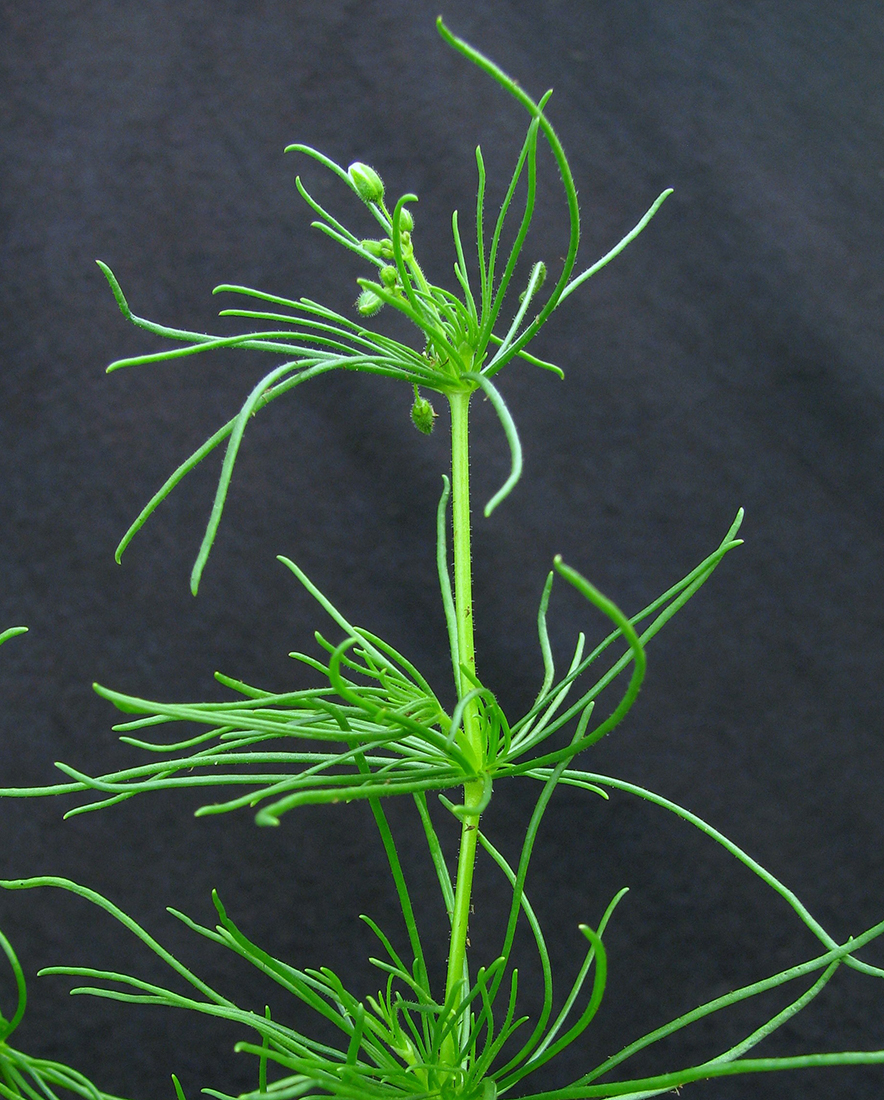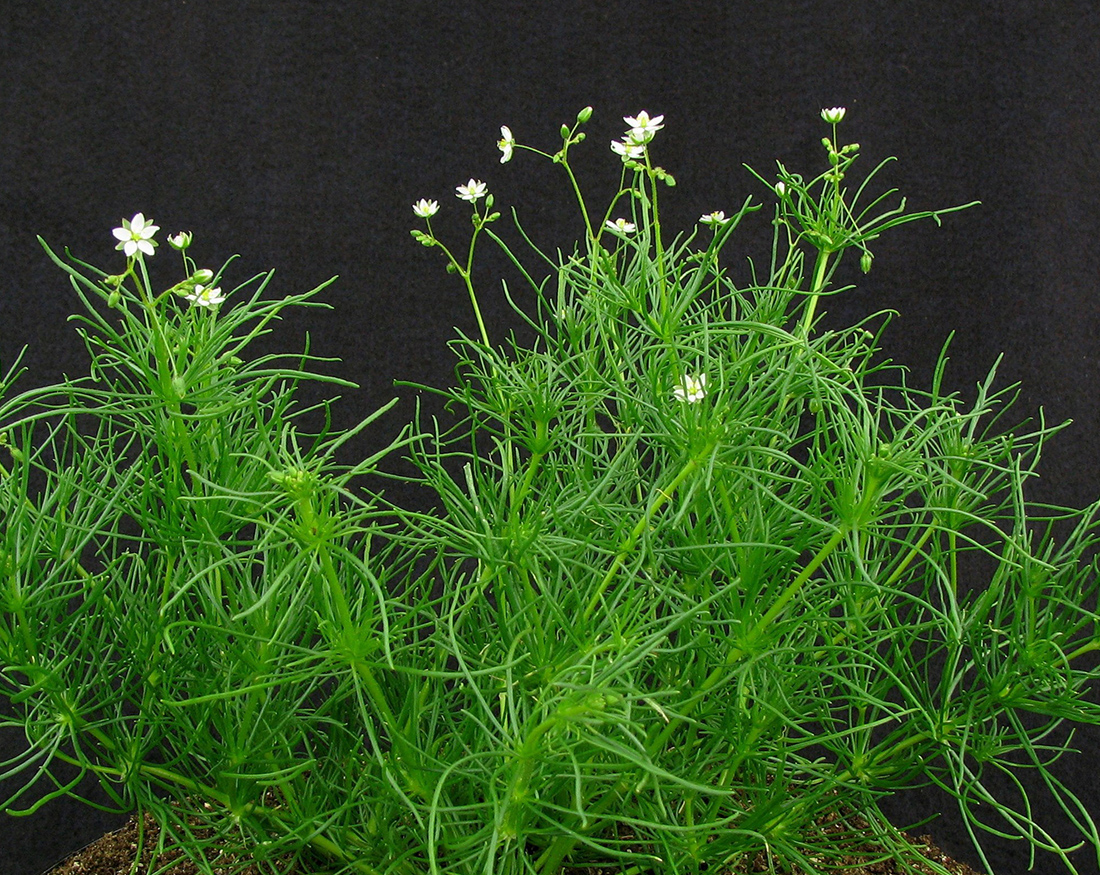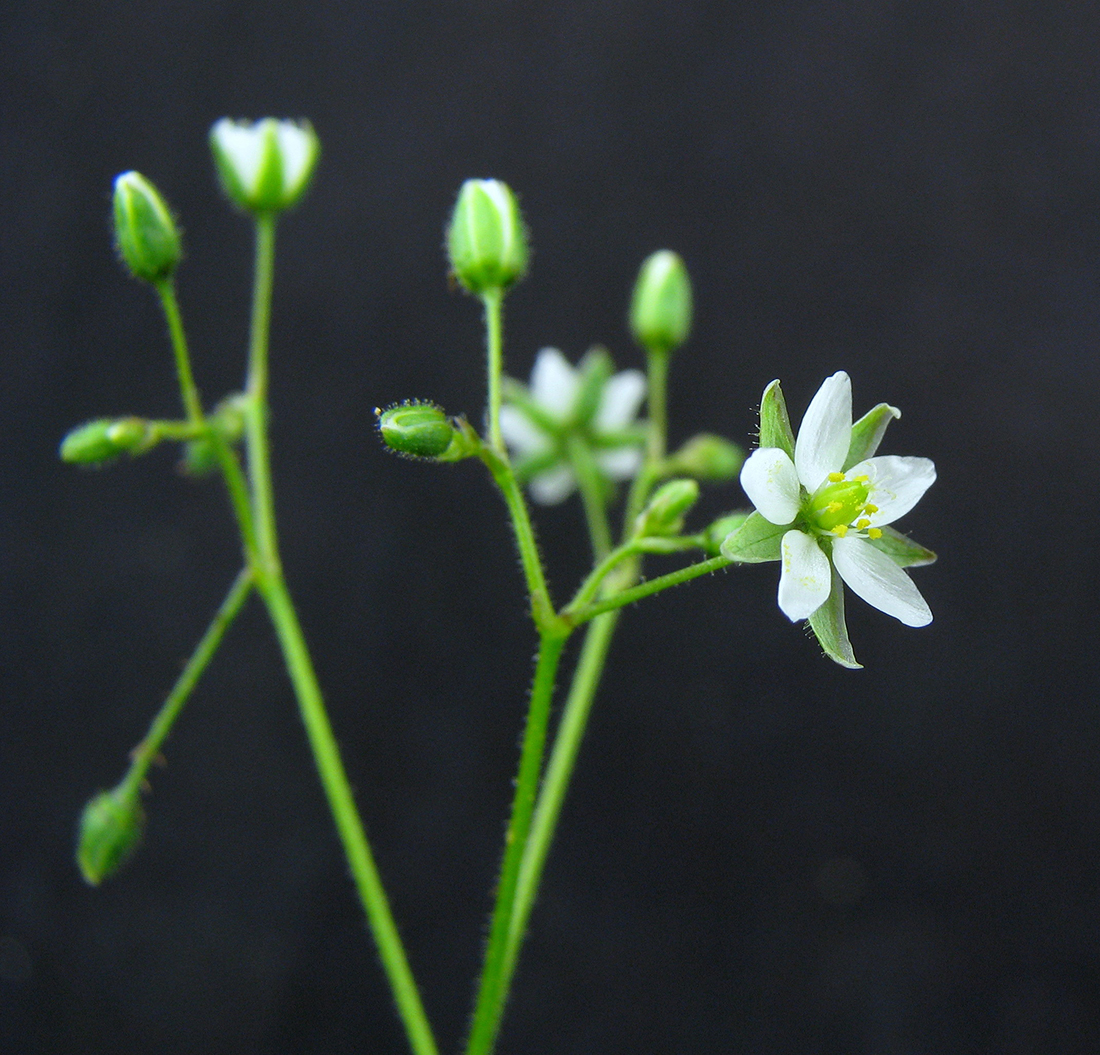Corn Spurry
- Pink (Caryophyllaceae family):
- Spergula arvensis L.
- EPPO code:
- SPRAR
- Other names:
- Spurrey
Species information
- Lifecycle:
- Annual.
- Propagation:
- Reproduces by seed.
- Emergence:
- Typically, corn spurry germinates and emerges in the early part of spring.
- Habitat:
- While it is found throughout Ontario, corn spurry is most commonly found on light sandy soils.
- Competitiveness:
- A Canadian study conducted in spring cereals demonstrated that corn spurry was not a very competitive species. A density of over 250 plants/m2 was required before an economic threshold was reached (Weaver and Ivany, 1998). However, a Swedish study found that corn spurry was detrimental in spring cereals compared to other species. However, yield loss calculated from 1,691 trials was only 5.4% (Milberg and Hallgren, 2004), so even if detrimental, the impact on yield loss would be relatively small.
Identification clues
Seedling
- Cotyledons:
- Filiform and cylindrical, similar to true leaves.
- Young leaves:
- The first leaves of corn spurry are long and narrow, and grow in a rosette-like cluster.
- Mature leaves:
- Mature leaves are similar in size and shape to first leaves, but they grow in whorls of 6–30 at each node.
Mature plant
- Stem:
- Its stem is much branched, finely hairy and sometimes sticky. It is bright green in colour and grows 10–50 cm tall.
- Flowers:
- Corn spurry has very small flowers with five white petals offset by five green sepals that are clustered on short stalks at the top of the plant.
- Fruit:
- The plant’s seedpods are round and split into five divisions that are filled with many flat, black and round seeds.
- Roots:
- Taproot with fibrous lateral roots.
Often mistaken for
With its many, very narrow leaves that form a whorl at each node, corn spurry rarely gets confused with other weed species that have whorled leaves, such as carpetweed, cleavers and smooth bedstraw.




Updated: January 13, 2023
Published: January 13, 2023